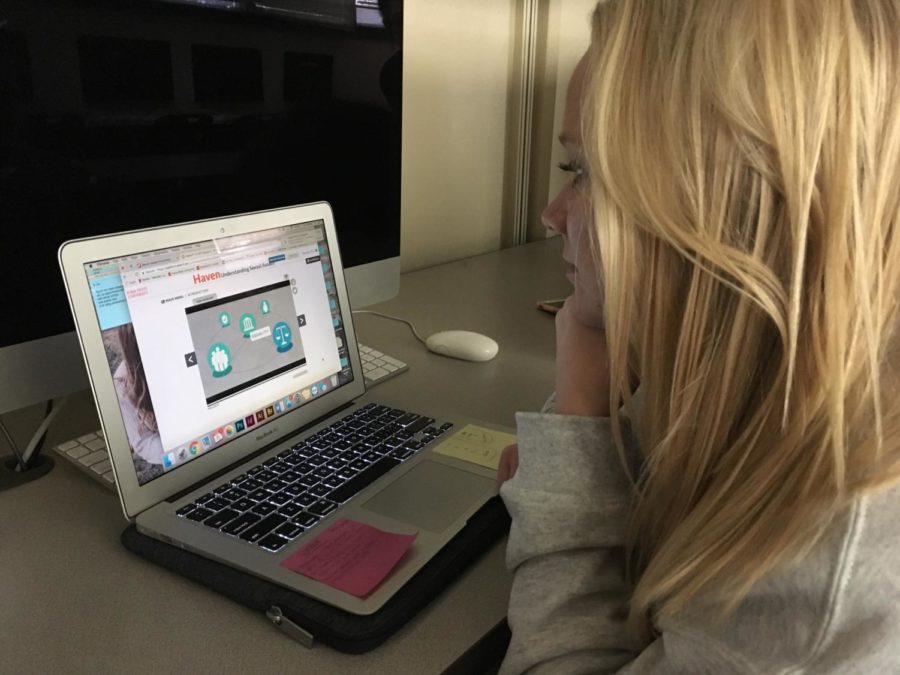Editorial: New sexual misconduct training better than previous one
Lindsey Settle/Iowa State Daily
An Iowa State undergraduate completes the required Title IX online training.
March 4, 2018
The new sexual misconduct training system required for all Iowa State students is a step up from the previous training. It does a much better job of placing the blame where it belongs, which is on perpetrators, and effectively communicating the importance of the issue.
In an editorial last academic year, the ISD Editorial Board discussed the flaws with the old training in that it included information perceived as victim blaming rather than making clear that sexual assault is solely the fault of the perpetrator.
We are pleased with the direction of the new training to move away from these portrayals. Even in its opening, the language in the new training about sexual misconduct does a better job of showing the extent of the problem.
“Sexual and relationship violence can impact anyone; it doesn’t matter what your age, race, ethnicity, gender, sexual orientation, or socioeconomic status might be,” a slide at the beginning of the training opens up with. “In fact, certain identities or student populations face even greater risk of violence or abuse.”
In another opening slide, it touches on the importance of understanding sexual misconduct and how individuals can “create a safer environment for everyone.”
Additionally, the training acknowledged that some who are required to take the training may have already experienced sexual violence and harassment. Most importantly, it reminded individuals that they are not to blame for what happened to them.
Last, and most importantly, the training actually talks about what perpetrators shouldn’t do. It talks about what behavior is not acceptable, no exceptions, without making it seem like it is the victim’s fault for doing the wrong thing or being in the wrong place.
Even as the training was presented to students in an email from President Wendy Wintersteen, the university did a better job of sending the message that they are tackling this issue for more than compliance reasons, but because they actually hope to make a difference. We hope that this mindset continues, but most importantly, we hope action continues.
We want to be clear, however, that this training is only one step in creating better education about sexual misconduct on Iowa State’s campus. This training will by no means be an end to sexual misconduct. But it’s a great step, especially considering that it’s required for all students.
We do want to emphasize that the lessons in this training cannot be learned in an hour nor can they be learned in an online training. This training is simply one step. Systematic efforts, like the Green Dot program, are pertinent to continuous education. We encourage community members to open discussions, whether it’s in the classroom or at club meetings, about sexual misconduct to raise awareness and prevent it from happening.
















